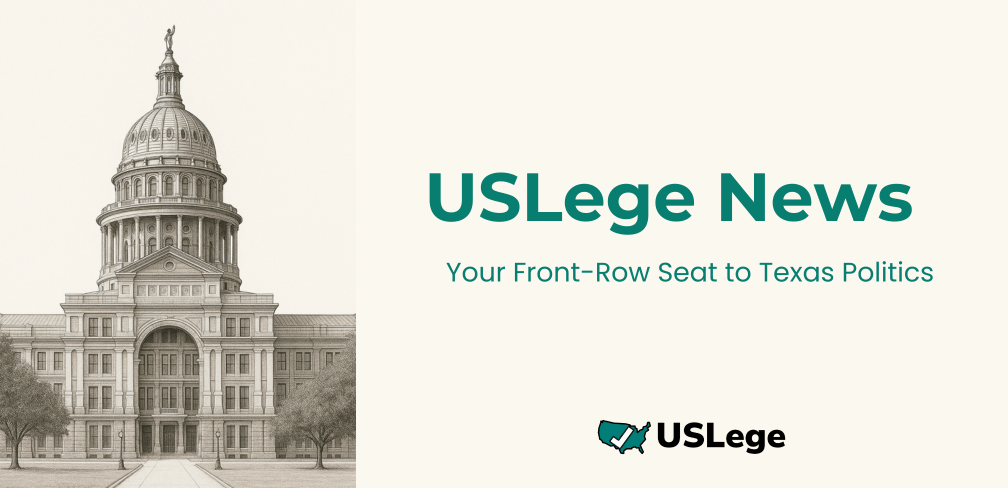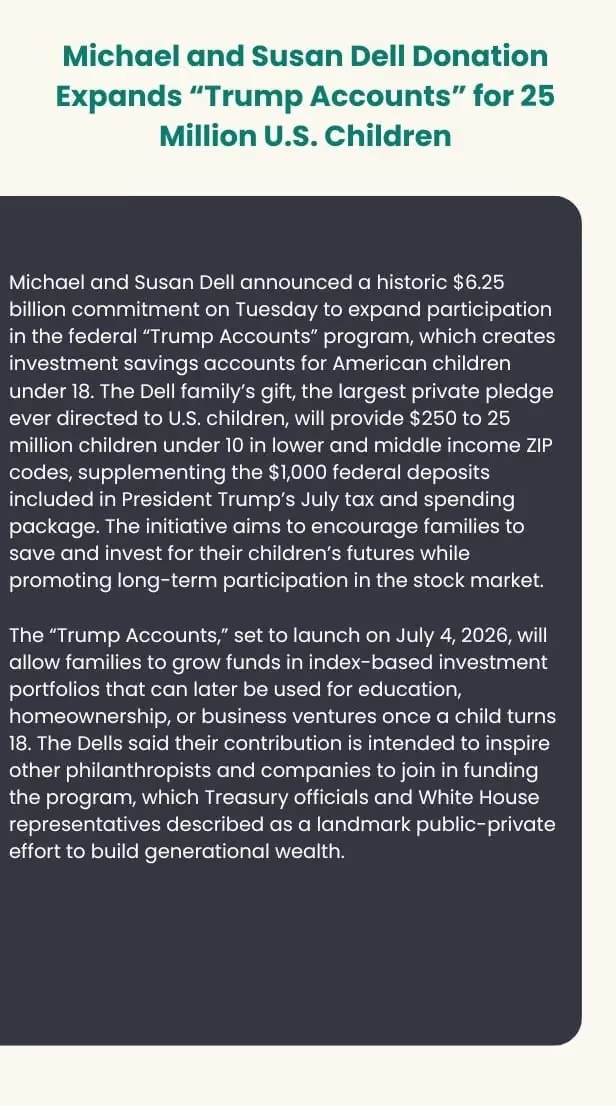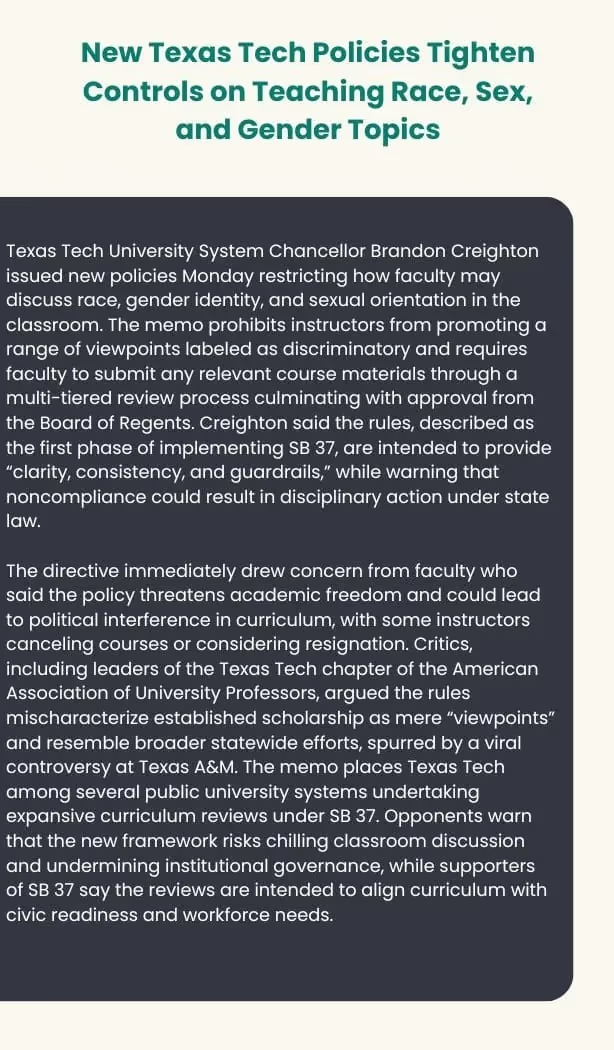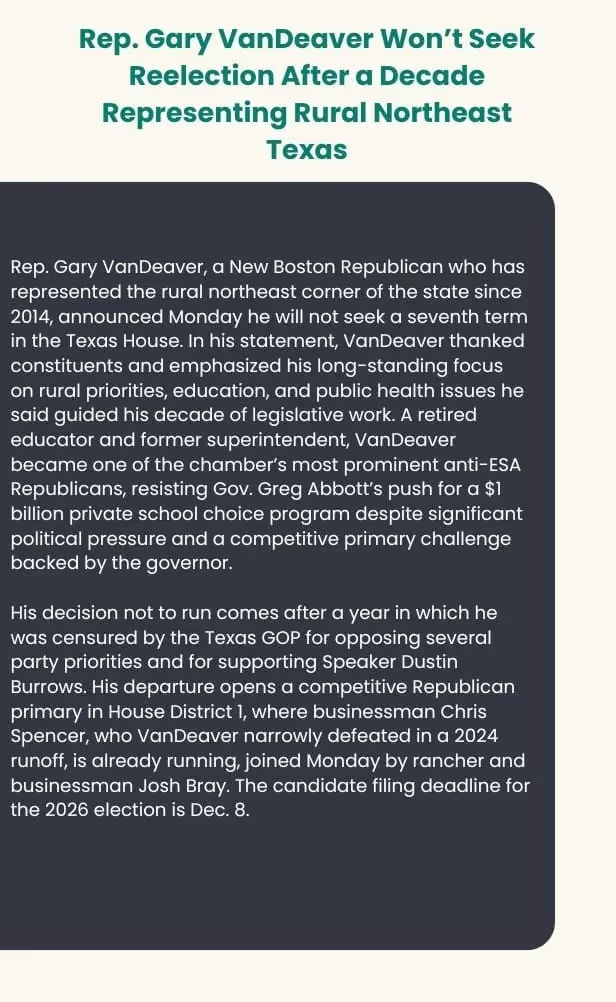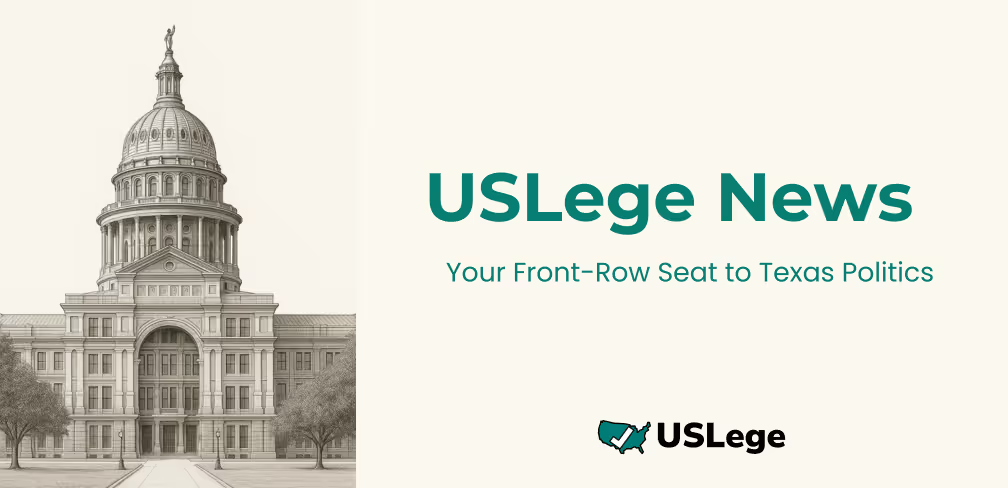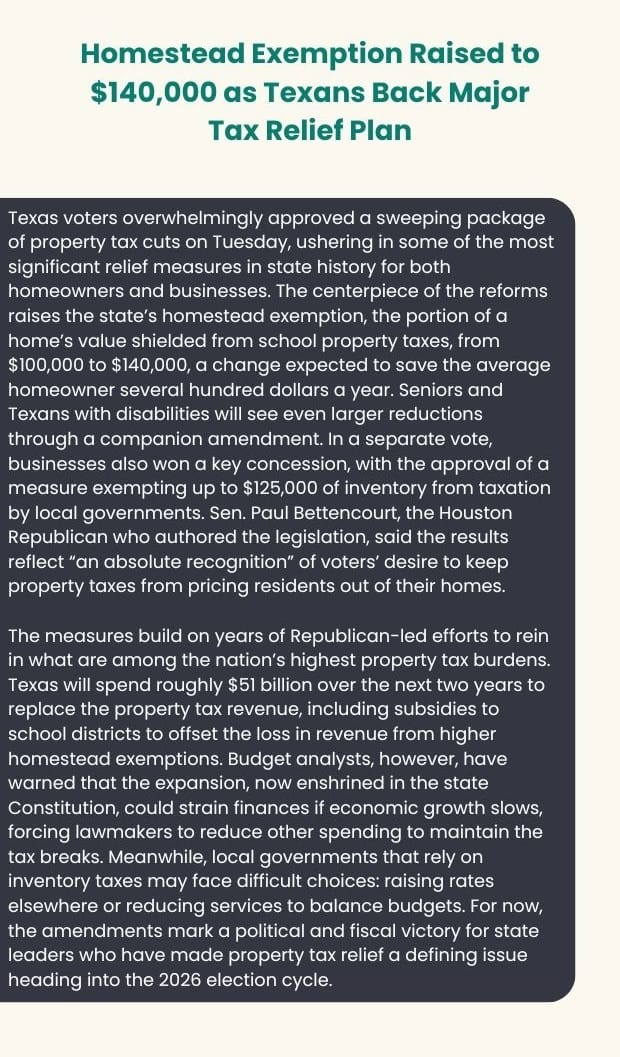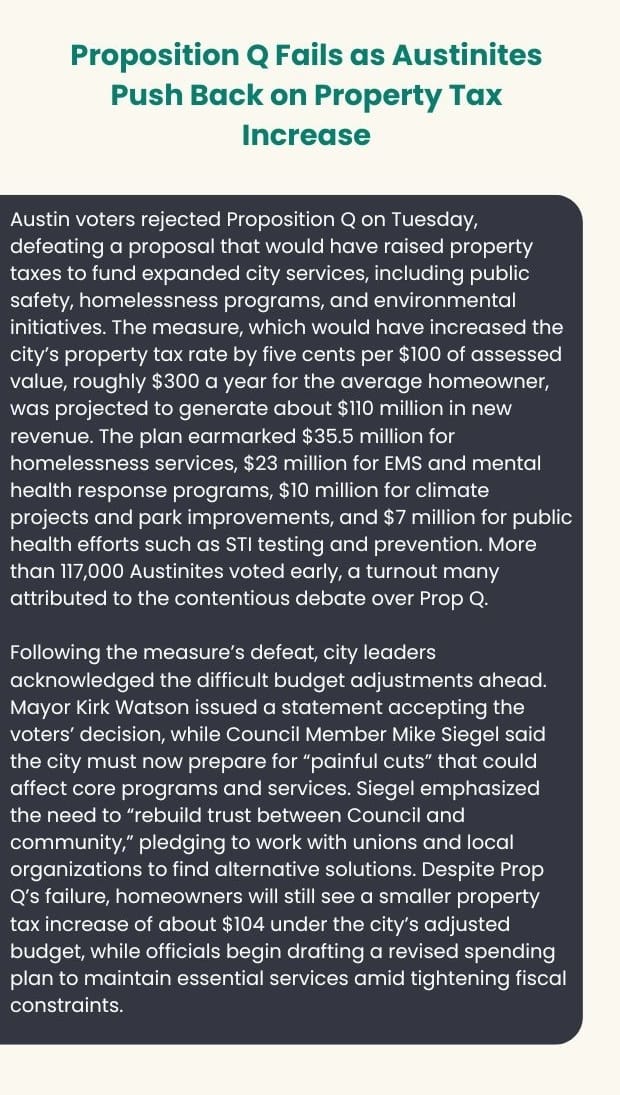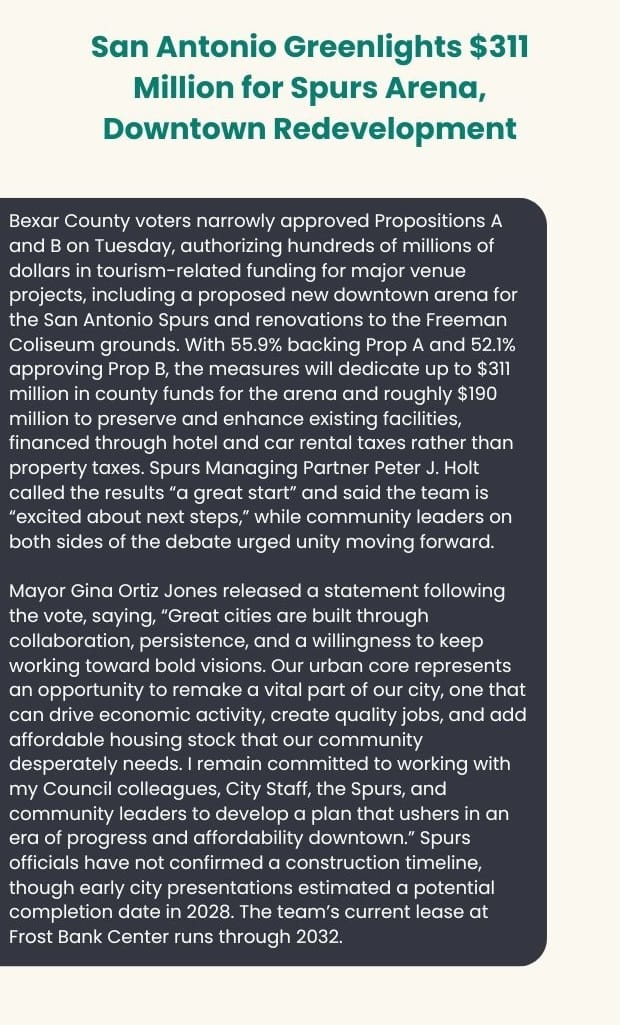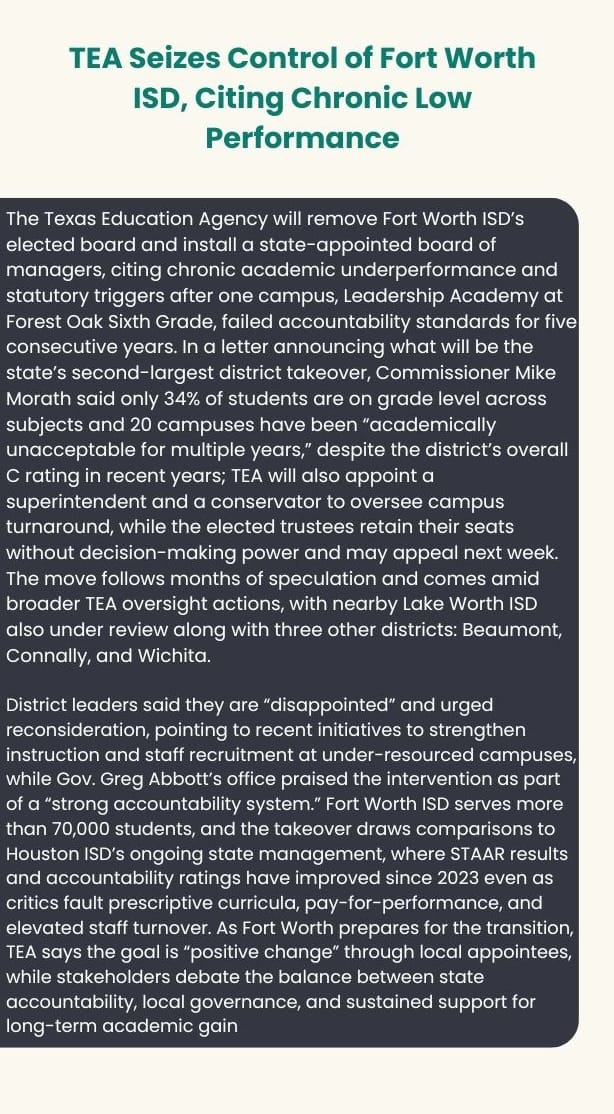What a difference a single envelope can make.
On January 23, 2013, Texas state senators chose envelopes, one-by-one, that determined their fate for a decade. Inside those envelopes were slips of paper numbered one through 31. An odd number gave senators a four-year term, meaning their next two re-election bids would share a ballot with the office of President of the United States.
After beating an incumbent and winning re-election in consecutive presidential election years, Sen. Wendy Davis (D-Fort Worth) drew an envelope containing an even number. SD10 would now be on the ballot in gubernatorial election cycles.
Nothing else about the district had changed. In fact, SD10 survived the 2011 redistricting process intact, a rarity for legislative districts, and Davis had once again won it. However, the shift from one election cycle to another altered the makeup of the district’s electorate in significant ways, transforming a true swing district into one that leans Republican, without redrawing a single boundary.
Davis did not seek re-election and instead waged a spirited but ultimately unsuccessful campaign for governor.

Sen. Konni Burton (R-Colleyville) finished first out of a five-person primary field, then defeated former Rep. Mark Shelton (R-Fort Worth) in a runoff, 60%-40%. She won the general election over Libby Willis, 53%-45%, to succeed Davis. Burton is expected to run for re-election, and there are already at least two Democratic challengers on the campaign trail: Euless biomedical researcher Allison Campolo and Burleson ISD trustee Beverly Powell.
SD10 lies completely within Tarrant Co., one of the state’s most reliably Republican urban counties. However, it contains large swaths of strongly Democratic precincts within Fort Worth, and their presence makes it the closest to a toss-up district in the state … in the right election year.
We analyzed single-punch, straight-party voting data from the precincts currently comprising SD10 back to 1998 to quantify the shifts in the electorate over time and between election cycles. The chart below shows the number of straight-party Republican and Democratic votes cast in SD10’s current precincts from 1998 to 2016.
Republican candidates running in the precincts currently in SD10 have enjoyed an advantage in straight-party voting dating back to at least 1998 and probably further (Our analysis only looks back to 1998.). Those advantages have ranged from less than 1K in 2008 to more than 27K in 2004.
Since 1998, straight-party voters have represented at least 57% of all votes cast except for 2006, when two well-known independent candidates for governor cut into straight-party voting in SD10 and across the state. Since 2008, about 65% of all ballots cast in SD10 have come from straight-party Republican and straight-party Democratic voters.
In general, straight-party Democratic voting has been rising across the district’s precincts, at least in presidential years. Since 2004, Democratic straight-party vote totals have increased by about 24K in presidential years but have only increased slightly compared to 2002 in gubernatorial years. Republican straight-party voting levels have been largely flat, hovering at just over 100K in presidential years and around 67K in gubernatorial years (excluding 2006) over the same period.
The seesaw nature of turnout alternating between presidential and gubernatorial election cycles is evident in the chart. This is not a unique feature of SD10. Statewide, the number of votes cast in the 2010 general election was 38% below 2008, and 41% fewer people voted for governor in 2014 than for president in 2012.
The wobbling gap between the two parties’ single-punch voters, particularly in the last five election cycles, is clearly shown in the chart. Republican candidates’ advantages in 2010 (19,343) and 2014 (13,406) are two of the three largest in the timeframe of this analysis. Those Republican advantages correspond to 11% and 7% of all votes cast, respectively.
The gap between the parties in 2014 was slightly larger than in 2012, but there were 37% fewer voters in 2014 than in 2012. Davis needed 56% of the vote from people going through the entire ballot to overcome the straight-party gap in 2012. She got 60% head-to-head versus Shelton, who was the 2012 Republican nominee, and prevailed.
Two years later, Willis needed at least 62% of the full-ballot vote to overcome the Republicans’ straight-party advantage in the district. She received 49%. Had Davis sought re-election, she would have needed to surpass her prior two performances among full-ballot voters in order to overcome that Republican advantage. In the gubernatorial race, she received just over 50% of the full-ballot vote head-to-head against Greg Abbott but lost the district by 13K votes.
Two more years later, in 2016, the straight-party vote gap was less than 5K, the second-smallest gap observed over the timeframe of this analysis. We estimate Davis would have had a good chance of winning re-election that year, had her envelope held an odd number instead of an even one, based on her performances in 2008 and 2012 among full-ballot voters. Davis, or any other Democratic candidate, would have needed just 52% of the full-ballot vote to defeat a Republican in a hypothetical 2016 race for SD10.
Of course, there was no race for SD10 in 2016. It’s in 2018.
For a Democrat to unseat Burton, two intertwined historical trends must be bucked. First, the gap in straight-party voting must be reduced to a level that makes the seat as competitive in a gubernatorial year as it is in a presidential year. Second, turnout in Democratic precincts must come closer to turnout in Republican precincts.
In each of the last four election cycles, turnout was 10-12 percentage points lower in precincts won by a Democrat than precincts won by a Republican. In 2008, 60% of registered voters cast ballots in precincts won by Davis compared to 72% in precincts won by Brimer. Two years later, both sets of precincts experienced an identical 28 percentage point drop in turnout. In 2012, 59% of registered voters cast ballots in precincts won by Davis compared to 69% in precincts won by Shelton. Both sets of precincts experienced an identical 25 percentage point drop in turnout.
This turnout gap directly affects the straight-party voting gap. In 2010, the Democrats’ advantage in straight-ticket voting in precincts won by Davis fell by more than half compared to 2008. The corresponding decline in the Republican advantage in precincts won by Brimer was just 10%. The Democratic decline from 2012 to 2014 was smaller (just 47%) and the Republican decline was bigger (34%), but the net result was a bigger Republican advantage overall out of a smaller pool of voters.
The table below shows the estimated straight-party vote advantage in 2018 under a variety of scenarios of changes in turnout – all declines – from the 2016 totals based on the declines seen for the last four gubernatorial election cycles.
[supsystic-tables id=6]
Scenarios are based upon the highest, average and lowest declines in the last four gubernatorial elections relative to the preceding presidential election, and the midpoints between those values, for each party. For example, if the decline in Republican straight-party voting would be midway between the average and the lowest decline of the last four gubernatorial elections, and the Democratic decline would be midway between the average and the highest for those elections, then the resulting 2018 Republican advantage would be 15,745 votes. If both parties saw an average decline in turnout from 2016, then the resulting 2018 Republican advantage would be 6,146 votes.
SD10 may be the closest to a swing seat on the state senate map, but it is still a Republican friendly district, particularly in gubernatorial election years. A Republican won it in 2002 and 2014, the only two gubernatorial election years during which it was on the ballot within the scope of this analysis. We project that Republicans would have won this seat in every gubernatorial election year since 1998.
A significant change in straight-party voting and turnout trends would be necessary to alter the district’s partisan trajectory … at least until the next time senators draw envelopes.
©2017 Texas Election Source LLC





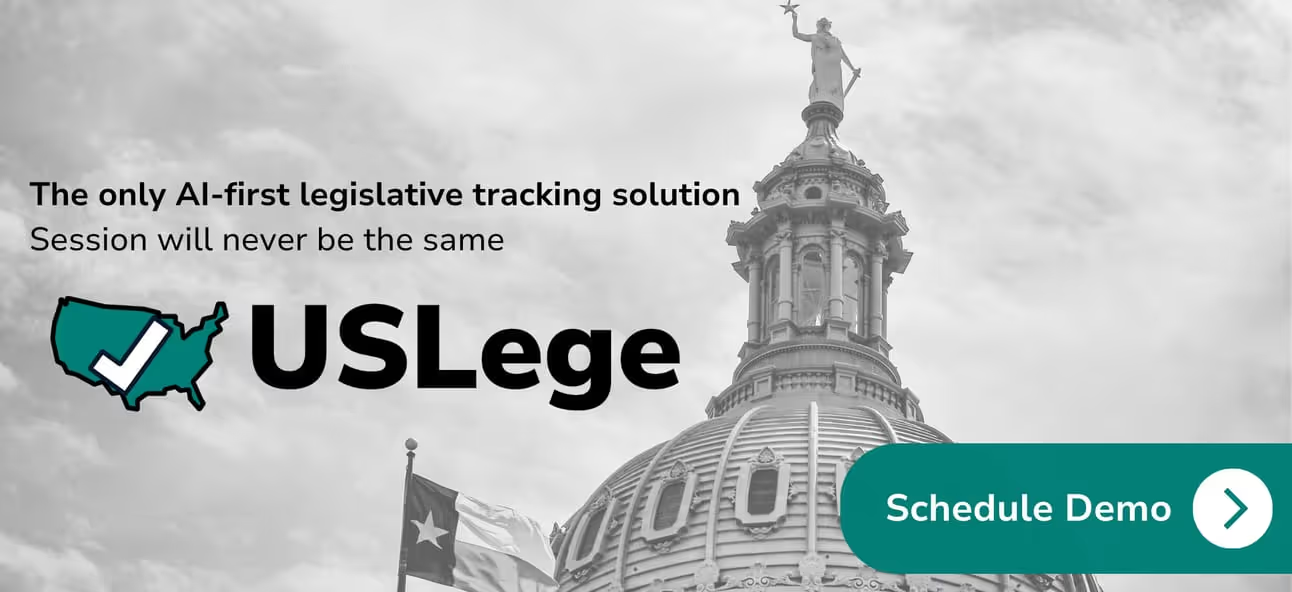
.avif)

















.avif)

